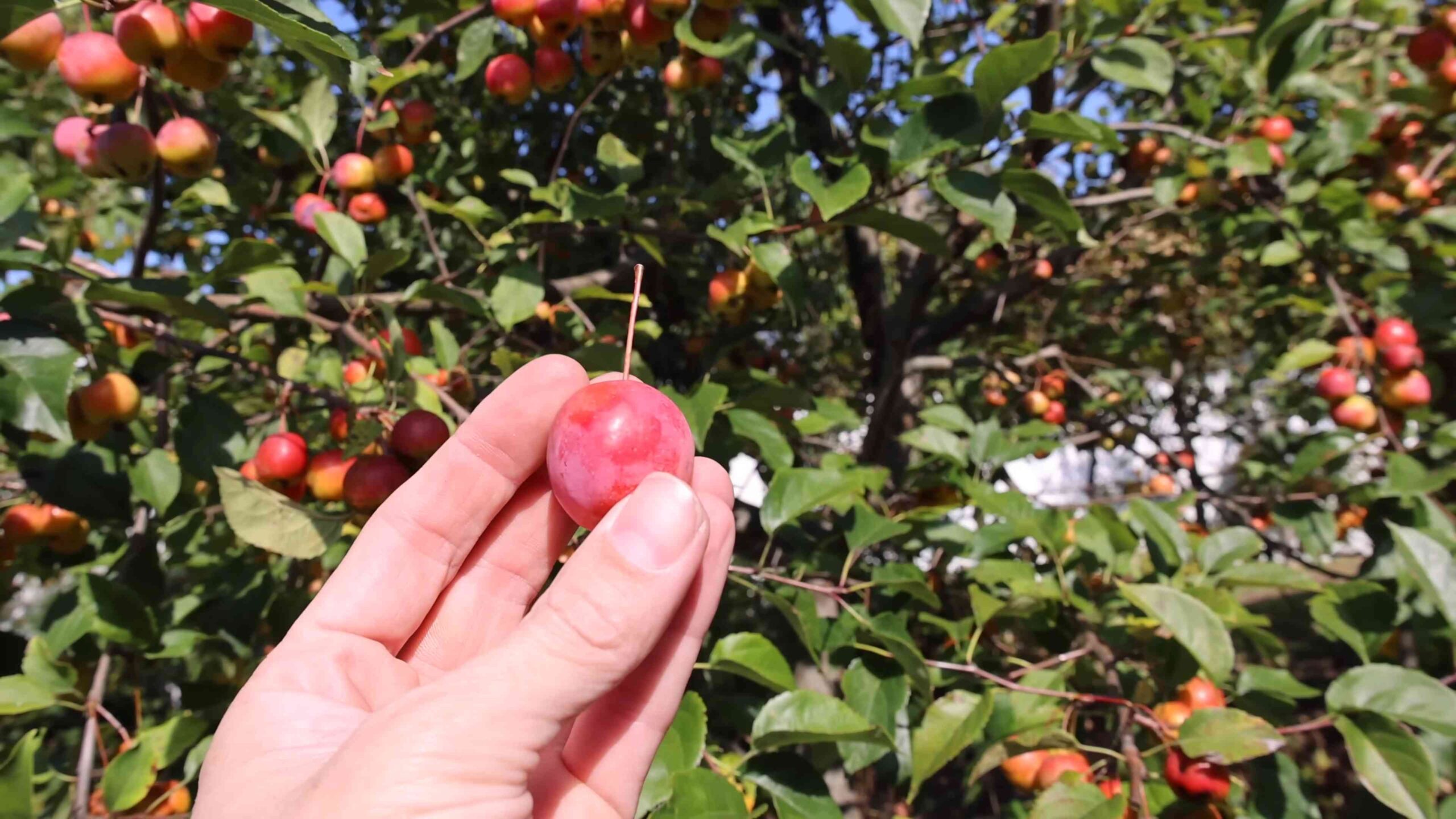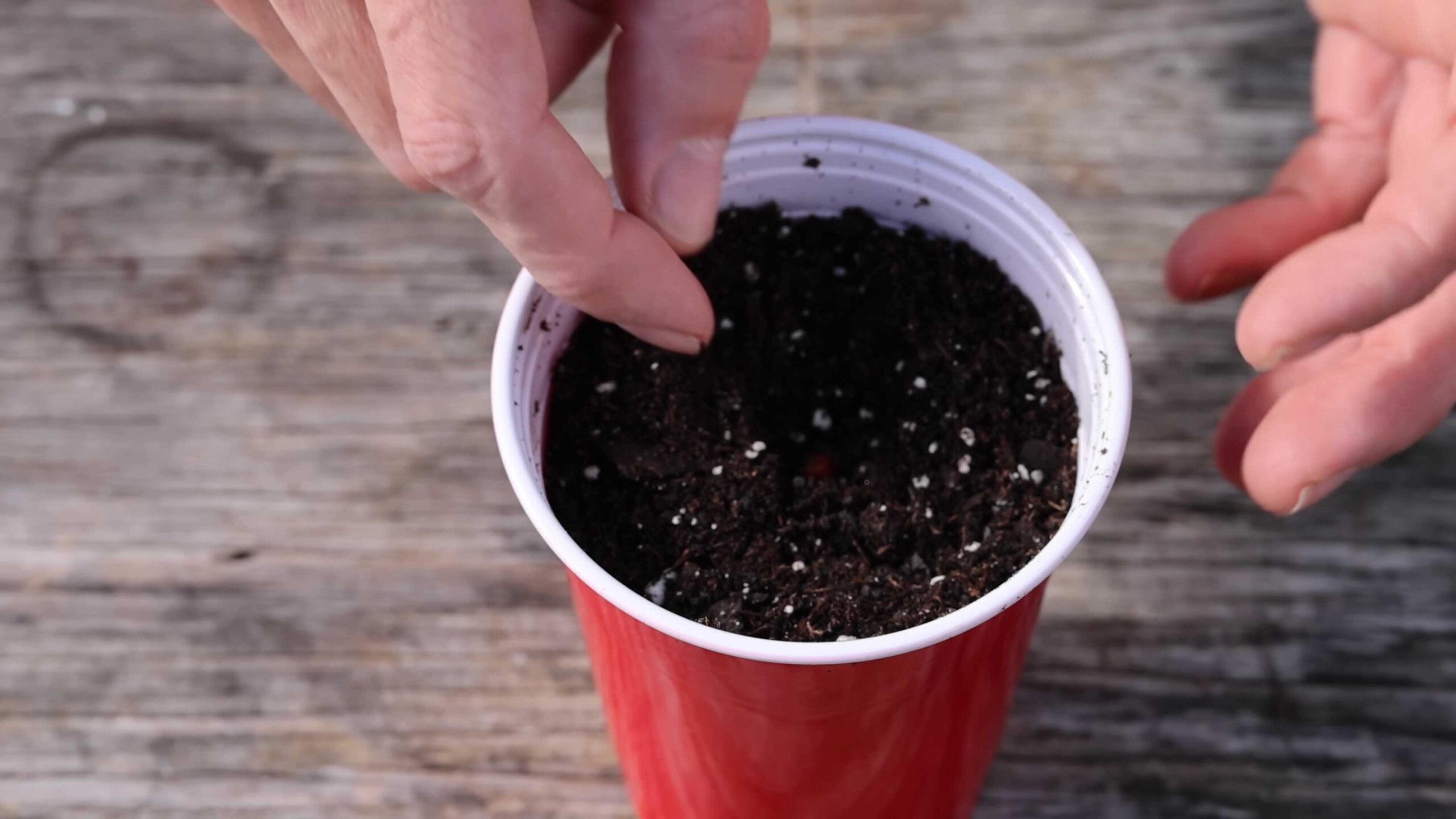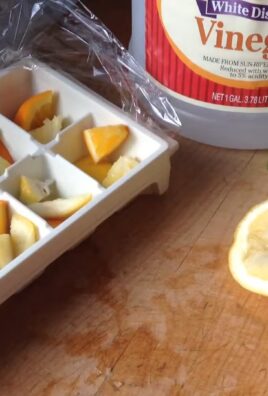Grow Apple Tree From Seed: Imagine biting into a crisp, juicy apple, knowing you nurtured it from a tiny seed right in your own backyard! Sounds like a fairytale, doesn’t it? Well, it’s more achievable than you might think! For centuries, cultivating apple trees has been a symbol of prosperity, knowledge, and even immortality, dating back to ancient civilizations. From the orchards of Kazakhstan, where apples originated, to the mythical gardens of Hesperides, the apple holds a special place in our collective history.
But let’s be honest, buying apple trees from a nursery can be expensive, and sometimes you’re limited in the varieties available. That’s where the magic of DIY comes in! Learning how to grow apple tree from seed opens up a world of possibilities. You can experiment with different apple types, create unique hybrids, and experience the immense satisfaction of watching your own little sapling grow into a fruit-bearing tree. Plus, it’s a fantastic way to connect with nature and teach kids about the life cycle of plants. I’m excited to share some simple yet effective tricks and hacks that will guide you through the process, ensuring your apple seed has the best chance of sprouting and thriving. Let’s get our hands dirty and embark on this rewarding gardening adventure together!

Growing Apple Trees From Seed: A Comprehensive DIY Guide
Hey there, fellow gardening enthusiasts! Ever dreamt of biting into a juicy apple grown from a tree you nurtured from a tiny seed? It’s totally achievable, and while it takes patience, the reward is incredibly satisfying. Growing apple trees from seed is a fun and educational project, perfect for anyone who loves a good DIY challenge. Just be aware that the apple you get might not be exactly like the parent apple – that’s the magic of genetics! Think of it as a fun surprise.
Here’s a detailed guide to help you through the process:
Choosing Your Apple and Preparing the Seeds
Before we dive into the nitty-gritty, let’s talk about selecting your apple and getting those seeds ready.
* Choosing the Right Apple: Opt for apples that are fully ripe and haven’t been treated with any wax or coatings. Organic apples are a great choice. Keep in mind that the resulting apple tree might not produce fruit identical to the parent apple due to cross-pollination. Heirloom varieties can be fun to experiment with!
* Extracting the Seeds: Cut the apple open carefully and remove the seeds. Look for plump, brown seeds. Discard any that are shriveled, discolored, or damaged.
* Cleaning the Seeds: Rinse the seeds thoroughly under running water to remove any remaining pulp. This is important to prevent mold growth during stratification.
* Drying the Seeds (Optional): Some gardeners prefer to dry the seeds for a few days before stratification. This isn’t strictly necessary, but it can help prevent premature germination. If you choose to dry them, spread them out on a paper towel in a cool, dry place for about a week.
Stratification: Mimicking Winter
Apple seeds need a period of cold, moist stratification to break their dormancy. This process mimics winter and tells the seed it’s time to wake up and grow.
* Gather Your Supplies: You’ll need a small container (like a plastic bag or a small food storage container), some moist paper towels or peat moss, and your apple seeds.
* Moisten Your Medium: Dampen the paper towels or peat moss with water. They should be moist but not soaking wet. You want them to be damp like a wrung-out sponge.
* Layer the Seeds: Place a layer of moist paper towels or peat moss in the container. Spread the apple seeds evenly over the layer. Cover the seeds with another layer of moist paper towels or peat moss.
* Seal and Refrigerate: Seal the container tightly and place it in your refrigerator. The ideal temperature is between 32°F and 45°F (0°C and 7°C).
* Monitor Moisture Levels: Check the container every week or two to make sure the paper towels or peat moss are still moist. If they’re drying out, add a little water.
* Stratification Time: The seeds need to be stratified for at least 60-90 days. Some varieties may benefit from a longer stratification period, up to 120 days. I usually aim for around 75 days.
Planting Your Stratified Apple Seeds
After the stratification period, it’s time to plant your seeds!
* Prepare Your Planting Containers: Choose small pots or seedling trays with drainage holes. Fill them with a well-draining potting mix. A mix of peat moss, perlite, and vermiculite works well.
* Planting Depth: Make a small hole in the center of each pot, about ½ inch deep. Place one or two apple seeds in each hole and cover them gently with potting mix.
* Watering: Water the pots gently until the soil is evenly moist. Avoid overwatering, as this can lead to root rot.
* Provide Light: Place the pots in a bright, sunny location or under grow lights. Apple seedlings need plenty of light to thrive.
* Maintain Moisture: Keep the soil consistently moist but not waterlogged. Check the soil moisture daily and water as needed.
Caring for Your Apple Seedlings
Once your apple seedlings emerge, they’ll need some TLC to grow into healthy trees.
* Thinning: If you planted two seeds in each pot and both germinate, thin out the weaker seedling, leaving the strongest one to grow.
* Fertilizing: Once the seedlings have developed a few sets of true leaves, you can start fertilizing them with a diluted liquid fertilizer. Follow the instructions on the fertilizer label. I like to use a balanced fertilizer, like a 10-10-10.
* Repotting: As the seedlings grow, they’ll need to be repotted into larger containers. Choose pots that are at least twice the size of the previous ones.
* Hardening Off: Before transplanting your apple seedlings outdoors, you’ll need to harden them off. This process gradually acclimates them to outdoor conditions. Start by placing the seedlings outdoors in a sheltered location for a few hours each day, gradually increasing the amount of time they spend outdoors over a period of one to two weeks.
* Pest and Disease Control: Keep an eye out for pests and diseases. Common apple tree pests include aphids, spider mites, and apple scab. Treat any infestations or diseases promptly with appropriate organic or chemical controls.
Transplanting Your Apple Tree
After a year or two of growth in containers, your apple tree will be ready to be transplanted into the ground.
* Choosing a Location: Select a sunny location with well-draining soil. Apple trees need at least 6-8 hours of sunlight per day.
* Soil Preparation: Dig a hole that is twice as wide and as deep as the root ball of your apple tree. Amend the soil with compost or other organic matter to improve drainage and fertility.
* Planting: Carefully remove the apple tree from its container and place it in the hole. Make sure the top of the root ball is level with the surrounding soil. Backfill the hole with soil and gently tamp it down.
* Watering: Water the newly planted apple tree thoroughly.
* Mulching: Apply a layer of mulch around the base of the tree to help retain moisture and suppress weeds.
* Staking (Optional): If your apple tree is young and spindly, you may want to stake it to provide support.
Long-Term Care
Once your apple tree is established, it will need ongoing care to thrive and produce fruit.
* Watering: Water your apple tree regularly, especially during dry periods.
* Fertilizing: Fertilize your apple tree in the spring with a balanced fertilizer.
* Pruning: Prune your apple tree annually to remove dead, damaged, or diseased branches and to promote good air circulation. Pruning also helps to shape the tree and encourage fruit production.
* Pest and Disease Control: Continue to monitor your apple tree for pests and diseases and treat them promptly.
* Pollination: Most apple trees require cross-pollination to produce fruit. This means you’ll need to plant at least two different varieties of apple trees that bloom at the same time. Alternatively, you can graft a branch from another apple tree onto your existing tree.
Important Considerations
* Grafting: Apple trees grown from seed often don’t produce fruit that is true to the parent variety. If you want to ensure that your tree produces a specific type of apple, you’ll need to graft a scion (a cutting from a known variety) onto your seedling rootstock. Grafting is a more advanced technique, but it’s worth learning if you’re serious about growing specific apple varieties.
* Patience: Apple trees grown from seed can take several years to begin producing fruit. Be patient and enjoy the process of watching your tree grow. It typically takes 5-10 years to get fruit from a seedling apple tree.
* Rootstock: The rootstock of an apple tree can affect its size, disease resistance, and fruit production. If you’re grafting your apple tree, choose a rootstock that is appropriate for your climate and growing conditions.
* Climate: Apple trees need a certain number of chill hours (hours below 45°F) to break dormancy and produce fruit. Make sure you choose apple varieties that are suitable for your climate.
Growing apple trees from seed is a rewarding experience that requires patience and dedication. But with a little effort, you can enjoy the satisfaction of growing your own delicious apples. Good luck, and happy gardening!

Conclusion
So, there you have it! Growing an apple tree from seed isn’t just a fun experiment; it’s a deeply rewarding journey that connects you to the natural world in a profound way. While it requires patience and understanding, the satisfaction of nurturing a tiny seed into a fruit-bearing tree is unparalleled. Forget the instant gratification of store-bought saplings; this is about witnessing the miracle of life unfold before your very eyes.
We’ve walked you through the entire process, from selecting the right seeds and stratifying them properly to providing the ideal growing conditions and understanding the grafting process. Remember, the key to success lies in meticulous attention to detail and a willingness to learn from your experiences. Don’t be discouraged by initial setbacks; every seed that doesn’t sprout is a lesson learned, bringing you closer to mastering the art of growing your own apple tree.
This DIY trick is a must-try for several reasons. First, it’s incredibly cost-effective. Instead of spending a significant amount on a mature apple tree, you can start with a handful of seeds and a little bit of effort. Second, it allows you to cultivate unique apple varieties that may not be readily available in nurseries. Imagine the bragging rights of harvesting apples from a tree you grew from seed, a variety unlike any other! Third, it’s an educational experience that’s perfect for families. Get your kids involved and teach them about botany, patience, and the importance of sustainable living.
Variations and Suggestions
Don’t be afraid to experiment! Try different apple varieties to see which ones thrive in your local climate. You can also explore different grafting techniques to improve the chances of getting the desired fruit characteristics. Consider using organic potting mix and fertilizers to ensure your tree grows strong and healthy without harmful chemicals.
For those living in colder climates, consider starting your seeds indoors and providing supplemental lighting during the winter months. This will give your seedlings a head start and increase their chances of survival when transplanted outdoors. You can also protect young trees from frost and pests by using tree guards and netting.
And remember, growing an apple tree from seed is not just about the fruit; it’s about the journey. Enjoy the process, learn from your mistakes, and celebrate your successes. The reward will be a beautiful, fruit-bearing tree that you can be proud of for years to come.
We wholeheartedly encourage you to embark on this exciting adventure. Try growing an apple tree from seed and witness the magic for yourself. And most importantly, share your experiences with us! We’d love to hear about your successes, challenges, and any tips or tricks you’ve discovered along the way. Let’s create a community of passionate apple tree growers and learn from each other. Share your photos, stories, and questions in the comments below. Happy growing!
Frequently Asked Questions (FAQ)
Q: How long does it take to grow an apple tree from seed?
A: Growing an apple tree from seed is a long-term project. It typically takes anywhere from 5 to 10 years for a seedling apple tree to produce fruit. This is significantly longer than growing a grafted tree, which can produce fruit in 2 to 4 years. The reason for this extended timeframe is that seedling trees need to mature and develop a strong root system before they can dedicate energy to fruit production. Patience is key!
Q: Will the apple tree grown from seed produce the same type of apple as the parent apple?
A: No, this is one of the most important things to understand. Apple trees grown from seed will not produce the same type of apple as the parent apple. This is because apple trees are heterozygous, meaning they have a diverse genetic makeup. When you plant an apple seed, you’re essentially creating a new variety of apple. The fruit produced may be similar to the parent apple, but it will likely have different characteristics in terms of taste, texture, and appearance. This is why grafting is so important for propagating specific apple varieties.
Q: Why is grafting necessary when growing apple trees from seed?
A: Grafting is necessary to ensure that you get the desired apple variety. As mentioned earlier, apple trees grown from seed will produce unique apples. If you want to grow a specific type of apple, such as Honeycrisp or Granny Smith, you need to graft a scion (a cutting from the desired variety) onto a rootstock (the root system of another apple tree). The scion will then grow and produce apples that are identical to the parent tree. Grafting also allows you to control the size and vigor of the tree.
Q: What is stratification, and why is it important for apple seeds?
A: Stratification is the process of exposing seeds to cold, moist conditions for a specific period of time to break their dormancy. Apple seeds require stratification to germinate properly. The cold, moist environment mimics winter conditions and signals to the seed that it’s time to sprout in the spring. Without stratification, the seeds may not germinate at all or may germinate poorly. You can stratify apple seeds by placing them in a damp paper towel or vermiculite inside a sealed plastic bag and storing them in the refrigerator for 60-90 days.
Q: What are the best growing conditions for apple seedlings?
A: Apple seedlings need well-drained soil, plenty of sunlight, and adequate moisture to thrive. Choose a location that receives at least 6-8 hours of direct sunlight per day. The soil should be rich in organic matter and have good drainage to prevent root rot. Water the seedlings regularly, especially during dry periods. Fertilize them with a balanced fertilizer in the spring and summer. Protect young trees from pests and diseases by using appropriate control measures.
Q: How do I choose the right rootstock for grafting?
A: Choosing the right rootstock depends on your desired tree size, soil conditions, and climate. Different rootstocks have different characteristics in terms of size, vigor, disease resistance, and cold hardiness. Research different rootstock options and choose one that is well-suited to your specific needs. Local nurseries and extension offices can provide valuable information and recommendations.
Q: What are some common problems when growing apple trees from seed, and how can I prevent them?
A: Some common problems include poor germination, seedling diseases, pest infestations, and nutrient deficiencies. To prevent these problems, use high-quality seeds, sterilize your potting mix, provide adequate drainage, protect seedlings from pests, and fertilize them regularly. Monitor your seedlings closely for any signs of problems and take action promptly.
Q: Can I grow an apple tree from seed in a container?
A: Yes, you can grow an apple tree from seed in a container, especially during its early stages. Choose a large container with good drainage and use a high-quality potting mix. As the tree grows, you may need to transplant it into a larger container or eventually plant it in the ground. Container-grown apple trees require more frequent watering and fertilization than trees planted in the ground.
Q: How do I know when my apple tree is ready to produce fruit?
A: It can be difficult to predict exactly when a seedling apple tree will start producing fruit. As a general rule, it takes 5-10 years for a seedling tree to mature and begin bearing fruit. The tree will need to reach a certain size and maturity level before it can dedicate energy to fruit production. Grafting can significantly reduce this timeframe. Look for signs of flower bud formation in the spring, which indicates that the tree is approaching fruit-bearing age.





Leave a Comment